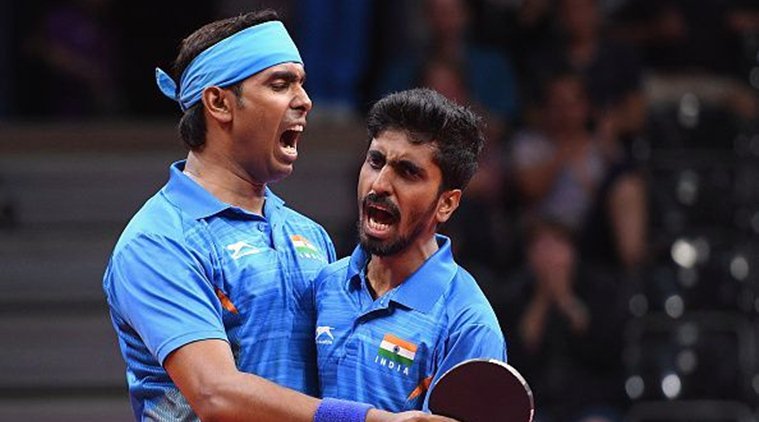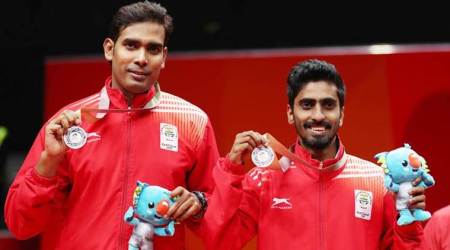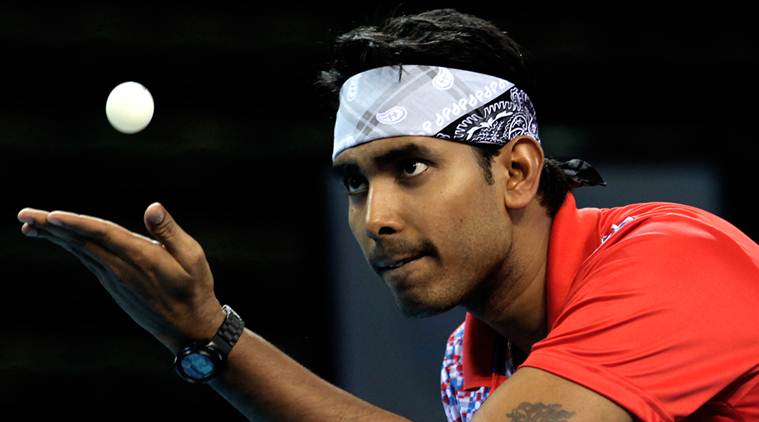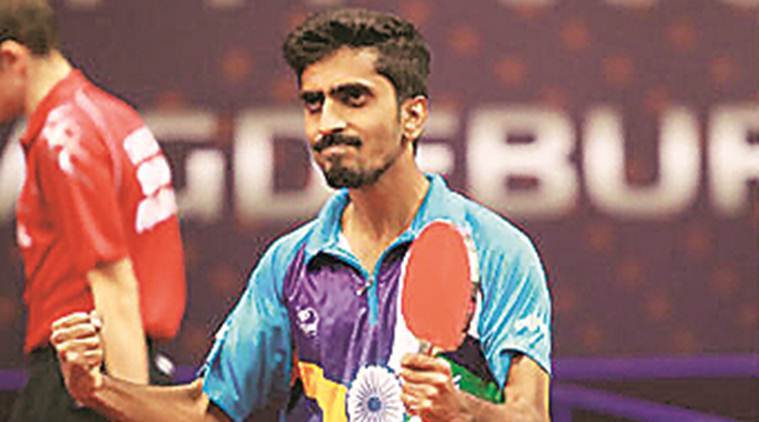 Sharath Kamal and Sathiyan Gnanasekaran changed Indian table tennis history at the 2018 Asian Games
Sharath Kamal and Sathiyan Gnanasekaran changed Indian table tennis history at the 2018 Asian Games
Table tennis was brought into the Asian Games fold in 1958 and since then, India had never been represented on the medal podium in a sport that has remained a stronghold of the continent. But all that changed in August 2018 at Jakarta, despite a top-quality field of Olympic level, thanks to veteran Sharath Kamal and 27-year old Sathiyan Gnanasekaran.
For Sathiyan, it was his first Asian Games. A few months earlier, the paddler from Chennai had brought back a gold, silver and bronze from the Commonwealth Games at Gold Coast, Australia. While that success was down to a modest field, the Asian Games would be a whole different ball game.
“The Asian Games is the same level as the Olympics because if you look at it from a medal point of view, China, Japan, Korea and Taipei are the best teams in the world. Except for Germany, these are the best teams in the world. We would always consider the Asian Games as the mini-Olympics. That’s why India had never won a medal before 2018, despite having great teams in the past,” Sathiyan told The Indian Express.
“Personally, playing at an Asian or Olympic level tournament is a lot different to being in a World Championship or pro tour event. It’s the same game but the aura and the hype around the event makes all the difference. The length of the tournament matters too. I had never played in a 15-day tournament and being mentally tuned in for a longer duration is always tougher.”
 (File photo)
(File photo)After getting Chinese Taipei in the draw, the Indian team knew it had a chance to top the group, which would have meant avoiding China, Japan and Korea. The Chinese Taipei line-up made the Indians feel like this was their best chance.
But heightened expectations also bring pressure – that derailed Sathiyan that day. India would lose 2-3 to Taipei, with Sathiyan losing both his matches. The moment that brought the Tamil paddler to his knees was during the deciding rubber he played against Taipei’s Lin Yun-ju. Both men had won a game each and in the third, Sathiyan was 8-3 up. But he went on to lose that game, the next one, the match and the tie.
“When we went through the draw, we felt that Taipei would be the toughest match for us. We were all excited that we had a great draw. But then, I didn’t play well nd ended up losing both my matches.
“I couldn’t sleep that night. I constantly kept calling (Subramanium) Raman sir. I remember continuously telling him that I had dropped a golden chance,” Sathiyan recalls.
The advice he got from his long-term mentor changed the course of the tournament for India. “When I talked to Raman sir, he said, ‘You’re going out and playing at the Games like we are China – like we’re supposed to win something. We’ve never won a table tennis medal at the Asian Games for 50 years. If you lose, we won’t have won a medal for 54 years. This is your first Asian Games and you’re already taking too much pressure. Just go out there and play your game.’ It removed the fear from my game.”
A quick dismantling of Macau in their final group game followed. Then came the draw, where India drew Japan. The host of the next Olympics were without three of their top players, providing Sathiyan & Co an opportunity to win the tie and ensure a first ever medal.
“Japan was without (Tomokazu) Harimoto. We were thinking that if we had a second chance, theirs would be the team we would want to face. Again, the draw landed somewhat favourably for us. That was when I realised how I was allowing the draw to draw conclusions for me. So I started telling myself that Japan was still better than us,” said Sathiyan.
 “Sharath was so happy because the Asian Games medal was something he had wanted to win for a while,” said Sathiyan (Source: Express Archive)
“Sharath was so happy because the Asian Games medal was something he had wanted to win for a while,” said Sathiyan (Source: Express Archive)
With only a few hours between their match against Macau, the draw for the next stage and their clash against Japan, Sharath Kamal took a step that may have changed the course of not just the tie, but half a century of history as well.
“Sharath came up with the idea that I should play first against Jin Ueda and change things up a little bit. I had beaten Kenta Matsudaira (who was to play the fourth match) in our last meeting and maybe the move would surprise the opponents. We felt we were underdogs and that this might help push things in our favour as we had nothing to lose,” Sathiyan said.
“I was a little tense about playing the first match. I had lost two matches against Taipei and that made me nervous about starting the tie. But I am a team player and when he (Sharath) suggested the switch, I could see there was a purpose to it.”
Sathiyan has always thought of himself as a calculating player. Each match, each player came with a new set of equations and somehow the instinct that channels players in the upper echelons of the game was missing from the engineer’s craft. Until that match against Kenta.
With India leading 2-1 in the series, the paddler from Tamil Nadu had the chance to finish off the Japanese challenge.
 For Sathiyan, it was his first Asian Games.
For Sathiyan, it was his first Asian Games.
“That match was magical. I had never played so fearlessly. I go into a match with a lot of plans. I have a Plan A, a Plan B… I’m a person who has been like that since childhood. At this level, you can’t calculate too many things. I played like I didn’t care about the next point and that started to startle my opponent. I played some amazing shots – shots that I wouldn’t have played if I cared about what the score was. I hit a banana stroke (backhand from the forehand side) at 9-9 in the second game when I was 1-0 up. It was a risky position and a risky shot that I normally wouldn’t go for. But this time, I felt like going through with my decisions rather than second-guessing them. I tried to play aggressive. I didn’t hold back. It was the biggest match of my career and it’s a lesson I want to take forward in my career,” said Sathiyan.
It wasn’t just the match where Sathiyan didn’t hold back, but his celebration afterwards as well. “I went mad! I have never thrown my racquet in the air – it’s not a good example to follow but I was completely out of my senses. I went down on my knees after that last point and remember everyone running towards me. They lifted me and I’ve watched that video maybe a million times. Whenever I need to feel pumped up, I go back to that moment.
“Afterwards, we were talking constantly about the match back in the room. Sharath was so happy because the Asian Games medal was something he had wanted to win for a while. He was talking to us about how India has been so close on many occasions before and now we had a solid team,” said Sathiyan.
India would get blanked 0-3 against South Korea in the semifinals. But they had secured a historic bronze medal at the Asian Games. Sathiyan describes it as the best moment of his career.
“That last point against Kenta was – some magic happened that day. That is something I had never experienced before – I felt like something had come from inside me and played this fantastic game of table tennis. Probably an Olympic medal might push the Asian Games medal to No 2 but that bronze felt like a gold to us.”